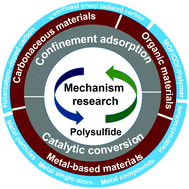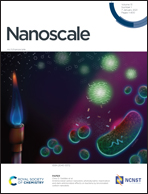Theoretical investigation on lithium polysulfide adsorption and conversion for high-performance Li–S batteries
Abstract
Lithium–sulfur (Li–S) batteries have shown great application prospects as next-generation energy storage systems due to their high theoretical capacity and high energy density. However, the practical application of Li–S batteries is still hindered by several challenges, such as their sluggish sulfur redox kinetics and shuttle effect of lithium polysulfides (LiPSs). To date, significant research has been focused on the confinement adsorption and catalytic conversion of LiPSs using theoretical or/and experimental methods. Among them, theoretical calculations are highly attractive to observe complex LiPS conversion reactions, which facilitate the rational design of S mediators for high-performance Li–S batteries. In this review, we summarize and discuss the recent advances in the adsorption and conversion of LiPSs from the viewpoint of theoretical calculations. Moreover, a set of theoretical principles to guide the screening of suitable host materials for Li–S batteries is presented and discussed. Finally, some personal insights about the future challenges and the focus of research in this field are presented, which will push a milestone step toward high-efficiency and long-life Li–S batteries.

- This article is part of the themed collections: Recent Review Articles and 2021 Nanoscale HOT Article Collection


 Please wait while we load your content...
Please wait while we load your content...